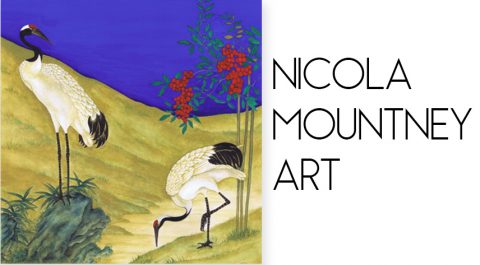
Nicola studied Buddhist thangka (scroll) painting and is inspired by the Chinese blue, green Landscape style, Shang Shui developed in the Tang Dynasty. This has led her to create a unique fusion where East meets West.
‘When I paint, I’m not striving to present something that I have seen, rather, what I have thought. They are not an open window for the viewer’s eye, but the viewer’s mind.’


